Posted by Elena del Valle on August 17, 2011

Sandie Viquez Pedlow, executive director, Latino Public Broadcasting
Photo: Latino Public Broadcasting
Latino Public Broadcasting (LPB), established in 1998 by Edward James Olmos and Marlene Dermer, is a Los Angeles, California based national non profit organization created to offer “new audiences to public television with a recognizable impact on a broad range of viewers that complement and challenge existing public television offerings.” The organization’s leaders seek to fill its mission of supporting “the development, production, post-production, acquisition and distribution of non-commercial educational and cultural content that is representative of or addresses issues of particular interest to U.S. Latinos” with an annual $1.5 million budget provided by the Corporation for Public Broadcasting.
“We work closely with Latino independent producers and filmmakers across the country to fund those projects that are relevant, that take creative risks, that have strong potential to engage a national audience and provide a lens to the history, culture and arts of the diverse Latino community,” said Sandie Viquez Pedlow, executive director, Latino Public Broadcasting by email when asked how the organization meets its mission and what criteria it uses to select projects. “We are always looking for those engaging stories that will enlighten and inform the American public and provide a voice to Latinos on public media.”
The organization’s most noteworthy recent productions include The Storm That Swept Mexico, Latin Music USA, Cachao: Uno Mas, and The Longoria Affair. The Latino Americans, a six part series, is planned for 2012. Its programs air on PBS stations nationwide. This month LPB received the 2011 Norman Lear Award Imagen Award which is given each year to a Latino writer or entity that has “excelled creatively to dispel negative stereotypes and perceptions of the Latino community.”
“These are exciting, dynamic as well as challenging times for public media and this award is a true honor and a wonderful validation of our work at LPB,” said Olmos. “As our Latino community increases in numbers, diversity and influence, we are more committed than ever to helping producers tell our stories and reaching ever broader audiences.”
Since its inception LPB has funded more than 200 projects, and organized 100 workshops, panels and screenings in California, Arizona, New Mexico, Colorado, Illinois, Florida, Texas, New York, and Massachusetts for the advancement of Latino producers and to showcase Latino-American culture. LPB collaborates with other minority consortia, and works closely with the Public Broadcasting Service (PBS), American Public Television (APT), and Independent Television Service (ITVS).
In addition to Olmos who is the chairman other board members are: Marlene Dermer, executive director, Los Angeles Latino International Film Festival; Frank Cruz, president, Cruz and Associates; Mel Rogers, general manager and president, KOCE; Cynthia A. Fenneman, president and chief executive officer, American Public Television; J. Wendy Thompson-Marquez, president and chief executive officer, EVS Communications; Dan Soles, senior vice president and chief television content officer, WTTW; and Irwin W. Young, chairman of the board, DuArt Film Laboratories, Inc.
Posted by Elena del Valle on August 16, 2011
Information provided by Event Partner

The 9th Annual Hispanic Television Summit
Tuesday, September 20th
Marriott Marquis New York Hotel, Times Square
Discount pricing for HispanicMPR.com subscribers
$50 off regular price of $425 until September 1st ($375) & $100 off regular price of $499 after September 1st ($399)
Enter Promo Code: HTS1
The Hispanic Television Summit is the signature conference for executives involved in the business of television and digital video targeted to the US Hispanic and Latin American viewing audience. The Summit will be held Tuesday, September 20th, 2011 at the Marriott Marquis New York Hotel, Times Square. It is presented by Broadcasting & Cable and Multichannel News. This year’s 2011 recipient of the Award for Achievement in Hispanic Television is Monica Gadsby, CEO, U.S. Multicultural & Latin America, Starcom MediaVest Group. Confirmed Keynote Speakers include Ed Gold, Advertising Director of State Farm and María Elena Salinas, Univision Network Co-Host of Noticiero Univisión and Aquí y Ahora.
To register, please visit www.multichannel.com/hispanic2011 or call Sandy Friedman at 917 281 4718
Posted by Elena del Valle on August 15, 2011
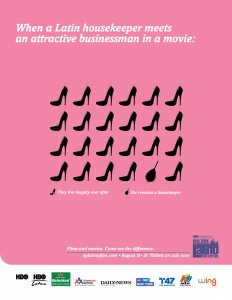
NYILFF Wing 2011 ad – click to enlarge
Photos, video: Wing
Hoping to attract English speaking New York City residents between 25 and 45 years of age to its twelfth annual event the organizers of the 2011 New York International Latino Film Festival (NYILFF) launched a new ad campaign the first week of August created to highlight a difference between movies and films by ribbing Hollywood movie cliches. The campaign with an estimated $50,000 in production costs and as much as one million dollars in paid and pro bono placements, was shot in Argentina with post production work in the United States. Scroll down to watch an ad.
The campaign emphasizes the shortage of Latinos in mainstream movies as well as the idea that Latino films concentrate on life compared to the “larger than life” abundant in blockbusters by showcasing stereotypical concepts like: The number of shots a six-round revolver can take in a movie without reloading, what happens in movies when a Latina housekeeper meets an attractive businessman, the names of gardeners in movies, and what happens in horror movies when a girl tries to get in a car.
TV and in-cinema ads, titled Asteroid, Dynamite, Fruit Stand Guy and Man in the Mirror, were produced by Wing, a New York ad agency, on a pro bono basis with the help of Academy Award winning Argentinean Production Company Puenzo Hermanos. The film festival staff believe the event’s audience consume a variety of media and love New York “for its energy and for everything it has to offer” and “define themselves as adventure-seekers and search out new and interesting experiences to fill their social calendar.”
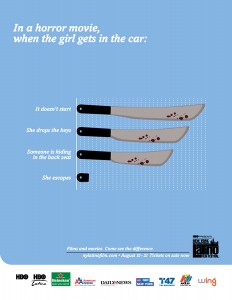
NYILFF Wing 2011 ad – click to enlarge
Each spot in the 2011 campaign makes fun of stereotypical Hollywood movie characters and ideas, and includes the tagline “Films and movies. Come see the difference.” In addition to TV, there are eight print and out-of-home ads in English and Spanish. The campaign seeks to reach “a broader audience with a commentary on the simplistic nature of Hollywood films, rather than an overtly Hispanic approach,” according to promotional materials.
Wing also created agency promotional material in-cinema and print that encourages people to let their Latino out. The in-cinema spot, intended to be “a whimsical and light-hearted effort” that shows an “un-Latin looking thin man” growing a thick mustache and liking it, attempts to emphasize the Hispanic influence on the mainstream market. Fifteen staff, led by Cionin Lorenzo, Elizabeth Gardner, Calixto Chinchilla, dedicated six months to the campaign production the success of which will be measured through ticket sales and on-line views. Festival staff anticipate 25,000 attendees at this year’s events.
The campaign was launched in NBC/Telemundo, HBO, Time, Out New York, Latina Magazine and the New York Daily News. In addition to the ads, the festival has active Facebook and Twitter pages where the new ads have been heavily promoted, a spokesperson indicated when asked about online placement of the ad campaign. The festival website was revised to coincide with the look and feel of the campaign. Also, the film festival independently created banner ads with geo-targeted placement on Hispanic websites. No information was available on which sites exactly.
The New York International Latino Film Festival strives to showcase the works of emerging Latino filmmakers in the United States and Latin America. This year’s festival run August 15-21 in various New York City theaters.
Posted by Elena del Valle on August 12, 2011
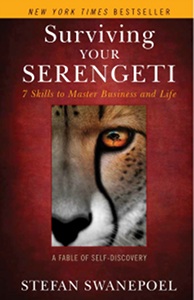
Surviving Your Serengeti book cover
Photos: Wiley
A salesman and entrepreneur born in Kenya believes it makes sense for business people suffering in the down economy to seek inspiration from some of the better known animal species in East Africa’s Serengeti and their behaviors. He proposes seven skills today’s executives should learn from the plains animals who make a thousand mile seasonal journey fraught with challenges and danger.
In Surviving Your Serengeti: 7 Skills to Master Business and Life (Wiley,$21.95) Stefan Swanepoel outlines a fable of a beleaguered California business owner and his wife on a safari trip to the Serengeti. On their first night in a safari tented camp in Tanzania, they run into a college acquaintance of his who describes the skills of each of seven animals he has been observing in their natural habitat.
He believes the skills humans can emulate are based on the animals’ unique survival skills. The seven he highlights are: Wildebeests stand out for their endurance, lions for their strategic hunting abilities, crocodiles for their enterprising nature, cheetahs for their efficiency, giraffes for their grace under stress, mongooses for their risk taking, and elephants for their superior communication skills.
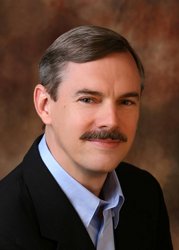
Stefan Wanepoel, author, Surviving Your Serengeti
The 176-page hardcover book is divided into nine chapters, an introduction, one to describe within the story each of the animal’s skills, and a final chapter where he wraps up the story and his concept as well as an Epilogue.
According to his bio, prior to writing the book, one of nineteen he has authored, Swanepoel ran a New York-based franchise network with 25,000 sales staff in 30 countries. A resident of California he has been president of seven companies and two nonprofit organizations.
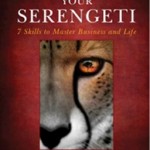
Click to buy Surviving Your Serengeti
Comments:
Filed Under: Books
Posted by Elena del Valle on August 10, 2011

Border wall at Buenos Aires National Wildlife Refuge, Arizona
Photos: Matt Clark, Border Patrol, Gerald L. Nino, U.S. Fish and Wildlife Service, Tom Smylie, Miguel de la Cueva
There are 368 miles of border between the country of Mexico and the State of Arizona. The federal government has already built 306 miles of fence along that border, 123 miles of pedestrian fence and 183 miles of vehicle fence. Per the Secure Fence Act of 2005, the federal government has already completed almost all of 651 miles of border fencing that were planned.
This fencing doesn’t include 82 miles of open border in Arizona, according to Patdollard.com. At the same time almost one third of the 1,950 miles of U.S. Mexico border lie within military, tribal, and public lands such as wilderness areas, national wildlife refuges, national forests, national monuments, state parks and hundreds of miles of national park lands (see Border Legislation, http://www.defenders.org/programs_and_policy/policy_and_legislation/border_legislation.php).
The cost of building a border fence on the U.S.-Mexico border ranges between $1 million per mile at its most affordable to as much as $15 million per mile, according to the Government Accountability Office (see Arizona seeks donors for border fence, Bloomberg News).

A Border Patrol agent sits next to an improvised fence seeking protection against rocks thrown from the Mexican side of the border
Feeling vulnerable by the three-hundred sixty-eight mile divide and fearing an “invasion” lawmakers in Arizona passed a law to raise as much as $50 million from private donors to build a border fence with inmate labor support. Build the Border Fence is the state’s fundraising campaign led by Senator Steve Smith and signed into law by Governor Janice K. Brewer with an effective date of July 20, 2011.
As of this writing, the campaign website hosted at Arizona’s Official Web Site, buildtheborderfence.com, lists 2,610 visitors and donations of $118,790. The website indicates that “The border fence constructed in Yuma, Arizona successfully thwarted 93 percent of all illegal crossings in that area. This proves that fences do in fact work!” It also states that “There have been over 35,000 deaths and murders along the U.S. Mexican border since 2006.” No sources for the data are included.

The U.S. Mexican border, Mexico is on the right side of the photo
There are two main sections that need fences in Arizona, Mathew Benson of the governor’s office explained by phone. A Yuma section which has proven to be effective and a Tucson section which only has vehicle barriers and needs reinforcement of “secure fencing” with an approximate cost of $3 million per mile. He was unaware of the number of miles of fence planned or the timeline for the project. He pointed out that the timeline would relate directly to the amount of money raised by the campaign.
“The word of people who live on the border,” Benson said when asked what information the state relied on to launch the campaign. “There is continued traffic of human traffickers and drug smugglers. It is a continuing issue. It is a difficult thing to get a figure for because it occurs in the shadows.”
The immigration numbers are down since the economy is down, he indicated. He also said that the number of illegal immigrants decreased in the Yuma section of the border since the federal government erected the fence.
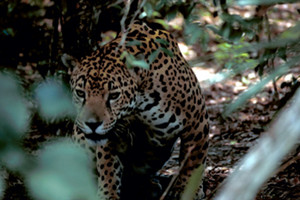
A jaguar, one of the species affected by the border fence
Some believe America’s southern border is safe and well guarded. A July 25, 2011 The Washington Post article concludes: “Like it or not, the border is a much safer and better monitored place than it has been in many years, and the trend lines promise more of the same (see Illegal immigration is way down and falling fast).” In addition to skepticism from those who believe the fence’s role in controlling illegal immigration is unproven and uncertain (see Noborderwall.com and Sierra Club Borderlands Campaign http://arizona.sierraclub.org/conservation/border/index.asp) there are those concerned about the environment. In Arizona, the Border Patrol estimated that 39 species protected or proposed to be protected under the Endangered Species Act are affected by its operations (see Wildlife and Border Policy, http://www.defenders.org/programs_and_policy/habitat_conservation/federal_lands/border_policy/index.php).
Defenders of Wildlife and the Sierra Club challenged the “short-sighted decision to build a wall through the San Pedro NCA, which is one of the American Southwest’s most unique and biologically diverse areas” in 2007. Defenders of Wildlife, dedicated to the protection of all native animals and plants in their natural communities, has more than 900,000 members and activists. The Sierra Club is one of America’s oldest, largest and most influential grassroots environmental organizations.
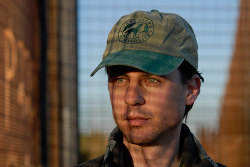
Matt Clark, southwest representative, Defenders of Wildlife
“The news is not good for wildlife. (There is) not only a loss of habitat but also wildlife fragmentation (disconnected pieces, wildlife corridors that were affected by the wall). I don’t think the state should be proud of this program because of the extensive damage that it will do to the environment and wildlife,” said Matt Clark, southwest representative, Defenders of Wildlife by phone. “At the end of the day it’s a lose lose for the environment. The state should use inmate labor to take down the damaging sections of the wall.”
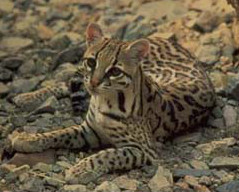
Mobility of ocelots in the fenced areas may be affected
Clark, coauthor of an article about the impact of the fence on area wildlife, explained that among the fauna affected are endangered and rare species like jaguars and ocelots (see Rare ocelot photographed near Sierra Vista, thrilling scientists by Tony Davis, Arizona Daily Star February 10, 2011) which have been sighted in Arizona as well as more common ones like mountain lions. He is concerned that by interrupting animal corridors and disrupting habitats the fence may affect genetic diversity and in the cases of rare animals with small populations lead to inbreeding (see United States border fence threatens wildlife by Melissa Gaskill).
“It’s a very good question and one we’re working on right now,” said Jose Viramontes, spokesperson, southwest region of the U.S. Fish and Wildlife Service by phone in response to a question about the impact of the federal fence on wildlife in the region and specifically in Arizona. “We actually are experiencing cross border migration among species that we know occupy the area. Fences in general are not good for wildlife.”
Posted by Elena del Valle on August 8, 2011

Marcela Sarmiento, assistant programming manager, Partnerships, AOL Latino
Photo: AOL Latino
A podcast interview with Marcela Sarmiento, former assistant programming manager, Partnerships, AOL Latino is available in the Podcast Section of Hispanic Marketing & Public Relations, HispanicMPR.com. During the podcast, she discusses tuvozentuvida.com with Elena del Valle, host of the HispanicMPR.com podcast.
During Marcela’s three years at AOL Latino, she served as AOL Latino’s female empowerment site head coordinator. She oversaw tuvozentuvida.com. She also managed editorial and programming, and creative collaborations with the site’s sponsor.
Marcela has been instrumental in the creative development and oversight of Tecnopadres.com, a technology site for parents, and the recently launched Kraft’s Niños de Verdad Program. She was in the lead of AOL Latino’s Influential Contributor efforts. For two years Marcela also served as president of PorColombia, a network of students and young professionals of Colombian background in the United States and Canada.
To listen to the interview, scroll down until you see “Podcast” on the right hand side, then select “HMPR Marcela Sarmiento” click on the play button below or download the MP3 file to your iPod or MP3 player to listen on the go, in your car or at home. To download it, click on the arrow of the recording you wish to copy and save it to disk. The podcast will remain listed in the August 2011 section of the podcast archive.
Posted by Elena del Valle on August 5, 2011

How to Protect Your Family’s Assets book cover
Photos: News and Experts
The average monthly costs of nursing home care in the United States are $6,470 (according to How to Protect Your Family’s Assets) and the American Association of Retired Persons estimates the median annual cost of a private nursing home room is $75,000. That is a lot of money for just about anyone except the very wealthy. As the country’s aging Baby Boomer population faces its future how will the millions of members of that generation deal with illness, nursing home issues and the related financial obligations they come with? Many, especially in these trouble economic times, feel unprepared to deal with retirement, the health issues that accompany old age, nursing homes and hospice care.
What is a family to do? K. Gabriel Heiser, J.D. believes those who prepare in advance and learn about the issues they will have to deal with deserve to take advantage of government programs and protections such as Medicaid. He has specialized on estate planning and Medicaid eligibility planning, trusts, estates, gifts, and related tax issues, since graduating from Boston University School of Law in 1983. The mistake a lot of people make is thinking that they can’t qualify for Medicaid, according to Heiser who is author of How to Protect Your Family’s Assets from Devastating Nursing Home Costs: Medicaid Secrets (Phylius Press, $47).
“Many feel that because they own a home or have some assets that they can’t qualify for Medicaid help with their nursing home and doctor’s bills,” he said. “The truth is there are a variety of assets people can own and still qualify. It’s just a matter of knowing the rules, and making a plan to meet those requirements.”
The 281-page softcover book first published in 2007 and reprinted annually through 2010 is bright red with big green, white and brown letters. It is divided into nineteen chapters: Introduction, What Is Medicaid?, What Is Covered by Medicaid?, Applying for Benefits, Medicaid Qualification Rules, Income Qualification Rules, Asset Qualification Rules, Transferring Assets, Trusts, Strategies to Qualify, The Home: Planning Ideas, Annuities, Promissory Notes, Transfer Strategies, Post-Eligibility Issues, Estate Recovery, Case Studies, Veterans Pension: How It Works, and Veterans Pension: Planning Techniques; and an appendix.
Heiser strongly urges readers to rely on the counsel of a professional and use his book to be informed and prepare questions for the professionals who assist them. All the “secrets” and tips he shares, he explains, are legal and ethical.
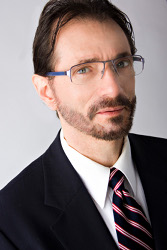
K. Gabriel Heiser, author, How to Protect Your Family’s Assets
“There are so many other rules that can benefit those who aren’t sure they’ll have enough when the time comes,” said Heiser. “The key is to plan now and act now. These laws exist for your protection, and avoiding the discussion and the planning necessary to take care of the potential complications just because it is an unpleasant topic will only result in a more unpleasant conversation when you realize you’re not ready when the worst happens. That can be a very expensive dilemma. Peace of mind right now, however, won’t cost a dime, and could save you hundreds of thousands of dimes later.”

Click to buy How to Protect Your Family’s Assets from Devastating Nursing Home Costs (5th edition)
Comments:
Filed Under: Books
Posted by Elena del Valle on August 3, 2011
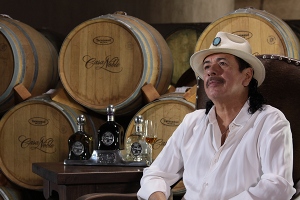
Carlos Santana at Casa Noble
Photos: Casa Noble
A family distillery that manufactures Single Estate Organic tequila exported to 23 countries has teamed up with Carlos Santana to further its reach. The famous musician became part owner and board member of Casa Noble and will use his name to promote the tequila brand with 60 percent of its worldwide sales in the United States.
Although the details of the deal were not made public plans are in place, HispanicMPR.com was informed by email, to promote the brand through public relations strategies and social media. The owners, the Hermosillo Family, will be working personally with Santana around his concerts and directly with accounts and distribution to generate interest and awareness about Casa Noble.
“We also plan on creating an event where Carlos will participate and can have direct contact with Casa Noble fans. We want to let everyone know that the passion that he has for his music translates to the passion we all have for Casa Noble,” said Jose Hermosillo, chief executive officer, Casa Noble.
To date Casa Noble has relied on print media efforts to reach its target audience divided evenly between genders mainly in Mexico and the United States. Executives at the company are believers in community outreach, tastings and special events. The company has offered Fine Tequila Tastings in many areas in United States and Mexico. The Casa Noble brand has been represented in events such as the launch of Rolls Royce Fantom in the United States, the Guggenheim Aztec Exhibition, and Virgin Galactic party in Los Angeles, California.
“We have come together because I love the Tequila,”said Santana in a press release. “Passion, dedication and integrity is what attracted me to Casa Noble Tequila. I feel at home with my new family at Casa Noble. They strive for excellence and don’t take shortcuts. Just like the music of Santana, one note or one drop… they are the same thing. You have to feel each note from your heart. Casa Noble and my family have the same origin, Jalisco, Mexico. My family roots date back to the 1700’s in Jalisco. My father is a Huichol Indian. When I visited the distillery, I immediately felt spiritually connected to the Hermosillo family and Casa Noble. Together we celebrate the gift of life and all of the blessing that come with it. Together we can all make a difference in the world.”

Jose Hermosillo, CEO, Casa Noble
“Of course, Hispanics are a very important segment for us, they know tequila and enjoy hi(gh) quality tequila and are willing to pay more for it,” said Hermosillo when asked about the importance of the Hispanic market.
Casa Noble representatives have been in attendance at consular events in Washington, D.C. and Dallas and Latino leader events. The company has a Spanish language website and Spanish language point of sale materials in Hispanic areas of the country.
“Santana’s love for the spirit of Casa Noble and his commitment to this new partnership is exciting for everyone involved with our brand. Santana’s personal philosophy of quality and integrity in the pursuit of perfection is synonymous with the Casa Noble brand of fine ultra premium Tequilas. The linkage between Casa Noble and Carlos Santana will create broader recognition that Casa Noble’s triple distilled, organically certified tequila is truly one of the finest ultra premium spirits,” said Hermosillo.
“We have been exploring this partnership for some time. This is a natural synergy; Casa Noble Tequila is deeply rooted in the pursuit of quality, craftsmanship and tradition. Santana through his life and his music has dedicated himself to those same values which are the key motivators behind this alignment.”
Casa Noble tequila is made in Mexico and has a Denomination of Origin (like wines) which specifies that it can only be produced in the state of Jalisco and parts of four other states. The company, now owned by the Hermosillo Family and Santana, has its distillery in the City of Tequila, Mexico and offices in Guadalajara, Mexico as well as in the United States. Its Asia base is in Singapore and its Europe base is in Germany.
Casa Noble tequilas, Crystal, Reposado, and Añejo, are made with blue agave, estate grown, picked and harvested by hand. After harvesting the plant is cooked in a traditional stone oven, leading to a natural fermentation and followed by distillation in traditional pot stills. After aging in French white oak the tequila is hand bottled at the estate. Santana has sold 90 million records and reached 100 million fans at concerts worldwide. The musician has won ten Grammy Awards, including a record-tying nine for a single project.
Posted by Elena del Valle on August 1, 2011

AARP Retirement Calculator in Spanish – click to enlarge
Photo: AARP.org
In October 2010, the American Association of Retired Persons, known more commonly as AARP, launched a retirement calculator as a retirement planning tool for its members. To date about one million people have made use of the online calculator. There are one million Hispanic AARP members among the organization’s 37 million members. Since older Hispanics are among the fastest growing segments of older people nationally it makes sense to target them.
Some believe reaching out to them in Spanish is a good way to do so. Earlier this month, AARP announced the launch of an online Spanish-language version of the original retirement calculator targeting some of the nine million (according to Diversitycentral.com) older Hispanics at aarp.org/calculadorajubilacion.
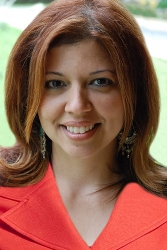
Rocky Egusquiza, vice president, Multicultural Markets, AARP
“With the launch last year of our bilingual Web site, Hispanics and Latinos 50+ have grown to expect high-quality content and trusted information from AARP,” said Rocky Egusquiza, vice president, Multicultural Markets, AARP. “This calculator continues to build on that promise and gives our growing Hispanic audience another tool to plan for their retirement security for themselves and for their families.”
According to AARP promotional materials, “Research has shown that using a tool like a retirement calculator can help people focus on the steps many need to take to get their financial lives in order.” The idea the organization’s staff have in mind is for users to rely on the AARP Retirement Calculator to evaluate their situation and figure out how to reach their retirement goals.
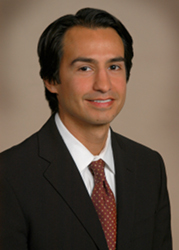
Andres Castillo, senior advisor for Education and Outreach, AARP
“For many, the first step to a secure financial future includes assessing when they can retire and what is needed to do so,” said Andres Castillo, senior advisor for Education and Outreach, AARP. “Whether an individual is starting at square one or needs to re-evaluate their original plans, the AARP Retirement Calculator is a tool that can help them determine where they stand and what they need to do next.”
The new calculator features a narrative, step-by-step design that AARP marketers expect will find the same popularity as the English language calculator has had to date. “We would hope, percentage-wise, that usage would mirror the English-language calculator,” said an AARP spokesperson.
At the end of the process users will be guided to additional AARP tools and resources about Social Security, financial planning and other aspects of retirement. The organization for retirees relied on its findings from a January 2010 survey by AARP, in collaboration with the National Hispana Leadership Institute and impreMedia to launch the AARP Spanish language Retirement Calculator. The survey was to a nationally representative general sample of 1,002 adults ages 45 and older and a targeted sample of 400 Hispanics ages 45 and older.
AARP, a nonprofit, nonpartisan organization targeting people fifty years of age and older for membership, produces AARP The Magazine with a circulation of 35.1 million. It also publishes AARP Viva, a bilingual U.S. publication targeting older Hispanics.
Posted by Elena del Valle on July 29, 2011
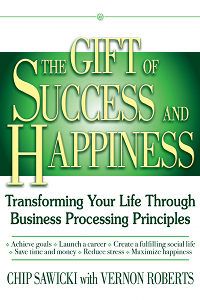
The Gift of Success and Happiness book cover
Photos: Skyhorse Publishing
Are you happy? Are you successful? How do you measure success? Does happiness accompany success? Chip Sawicki, an adjunct professor at Wake Forest University, and Vernon Roberts, a leadership facilitator, believe they have the answers to these questions.
In The Gift of Success and Happiness Transforming Your Life Through Business Processing Principles (Skyhorse Publishing, $16.95), a 240-page softcover book published in May of this year, the two men discuss their ideas on how an ambitious person might achieve personal happiness and professional success. They believe it is possible to have both without sacrificing one in favor of the other. They also believe that finding happiness is in each person’s hands and the result of the decisions he or she makes.

Chip Sawicki, author, The Gift of Success and Happiness
Financial success results when people set and meet ambitious goals for themselves; happiness is the result of setting reasonable expectations that are fulfilled regularly; and it is necessary to contribute to the community in order to feel satisfied, they say in the Preface. According to them, making all these interconnected goals a reality requires planning; and, in the same way that executives in successful companies make plans to reach their goals people need to make plans to meet their interconnected goals and find well rounded happiness.
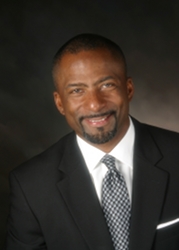
Vernon Roberts, contributor, The Gift of Success and Happiness
The book is divided into 14 chapters and three main parts, Primary Sources of Stress, The Core Elements of Life, and What Gives Our Lives Depth. In the book, the authors offer step-by-step plans that can be personalized for each major shift in a person’s life, such as: suggestions for a clear structure to balance success and happiness, self-evaluation worksheets, suggestions to develop the most important elements in a person’s life, ways to avoid unnecessary stress resulting from social, financial, and time management issues, and business ideas for productive decisions.
Prior to his position at Wake Forest University Sawicki was chief financial officer of the Texas Rangers and Stars sports teams and after that he was a stay-at-home dad. Roberts, founder of Evoke Learning & Performance, is a coach and performance consultant.
Comments:
Filed Under: Books


































